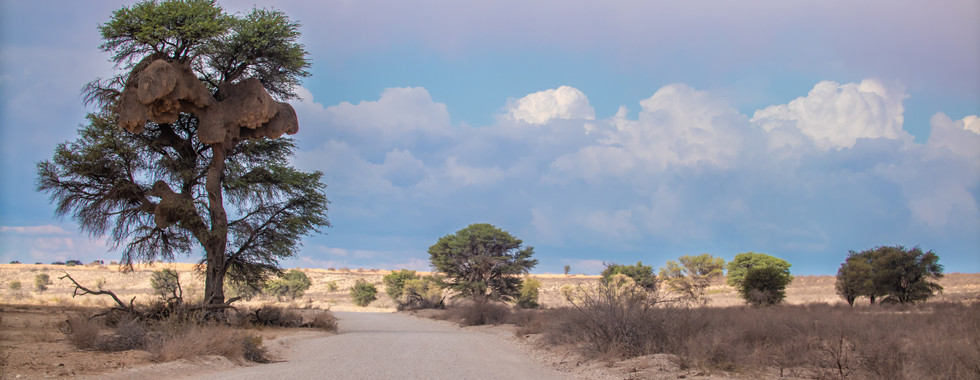After we suffered in the infamous Kalahari heat the first 2 days we still enjoyed our last day and night at Twee Rivieren, surrounding picnic sights and the museum.
After an early morning drive up the Auob we had a quick breakfast at Auchterlonie. We always have a walk around and enjoy the little creatures that come visit, like the korhaan. Honestly I have yet to differentiate between the northern and Southern black korhaan, as the look the same.
After a quick stop we took short dune road and a passer by kindly let us know of a male lion at kij gammies. We enjoyed the sandgrouse and falcons at the waterhole for a while when we heard the roar emanating from somewhere unseen, the oryx where then hesitant to have a drink!
The dune roads are often quieter, or its more difficult to spot wildlife, but they can be rewarding. In this instance, they spent there tim eat the water holes in the dry heat.
At kij kij we met up with the lions again, comfortable and sleepy.
This was our hottest day ever. To get some reprieve, we went to swim and a walk through the marvellously airconditioned museum depicting the history of the park and indigenous khoe speaking people who still live there today. Interestingly khoe and san are linguistic terms and not ethnic terms, with khoe speaking being more accurate. The people of the Kalahari are diverse and each have there own preferred description, some known as Bushmen, San or sometimes the Red people , there mother tongue, I cannot pronounce is Ncoakhoe. The word Kalahari comes from the Kgalagadi word makgadikgadi for the land that dried up, or thirstland. and the word auob means bitter water, with Nossob meaning dark clay. Two surrounding khoe speaking communities are the Khomani and the Mier communities.
As with all very hot days, we had a spectacular evening. Sunrise, sunsets and nights are the most spectacular times in the bush. The next morning we headed out towards our next destination, Nossob. On route we had passed the lioness that had died 2 days earlier and was decomposing and disappearing quickly. We stopped over for a picnic at Melkvlei with our daily lion pride just 200m away over the dune, sleeping.
We enjoyed a few birds of prey on route, including a martial eagle on a dune and some cape vulture on the ground. Birding is hard and telling the difference can be tricky. Cape vulture are bigger than white backed vulture and the adults have a blueish colour to the skin on there head and breast. The white backed vulture appears to be more contrasting white on the back with dark plumage under as well as a white neck ruff.
We skipped the Dikbaardskolk picnic stop to get ahead of the convoy of cars and campers. With the next 6 nights at Nossob, we wanted the best shade. This is where it got wild!
















Comments